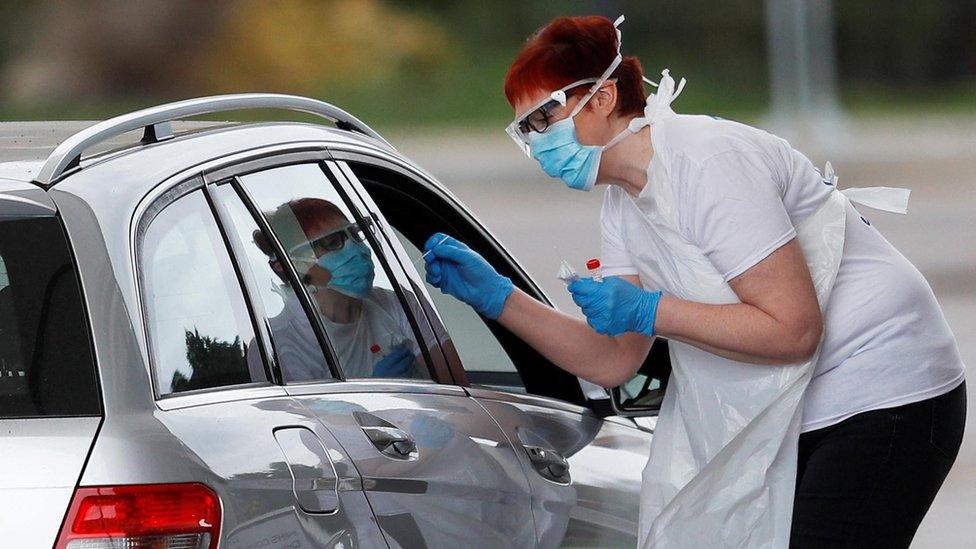Coronavirus: R number 'very similar' across UK
- Published
- comments

Coronavirus cases are falling at roughly the same rate across the UK, according to a leading scientist advising the government.
Prof Graham Medley said there was no evidence of differences in the reproduction (R) number across the UK.
Deaths and cases have fallen in every UK nation and region since early April.
That suggests the R number - the measure of how many new people are infected by each case - is below one everywhere.
The government is keeping a close eye on R as it reviews lockdown. If it goes above one, the epidemic will grow.

At the peak of the epidemic in April, everywhere except Northern Ireland, Wales and the south west of England were seeing more than 100 deaths a day. That compares with fewer than 35 in each nation and region on 20 May.
There has been significant interest in whether there are differences in regional R rates.
Two weeks ago, the Mayors of Greater Manchester and Liverpool, Andy Burnham and Steve Rotheram, called on the government to publish regional R numbers, saying their areas were "not yet on the clear downward trajectory seen in other parts of the country".

Steve Rotheram and Andy Burnham called on the government to publish regional R numbers
The BBC understands that Sage (the Scientific Advisory Group on Emergencies) does plan to publish regional estimates for England of the R number.
Its figure will be based on the work of several different groups, including the London School of Hygiene and Tropical Medicine (LSHTM), Imperial College London, the University of Cambridge and the University of Warwick.
But Prof Medley, who is based at the LSHTM, said: "I have not seen any data that would lead me to be believe that there are any regional differences.
"The epidemics in each region looked very similar."
This doesn't mean a "one-size-fits-all" approach, though.
Prof Keith Neal, an epidemiologist at the University of Nottingham, added: "This is not one pandemic, but a series of local epidemics all occurring at the same time."
The scientists say variations are much more local - for example around individual care homes or hospitals.
Why do the scientists say there's no difference in R?
The main data used to calculate R will be familiar: new cases, deaths and people in hospital.
Scientists also look at 111 and 999 calls, contact data from surveys and Google, and information from King's College London's Covid symptom-tracker app.
They warn that national estimates of R come with a wide margin of uncertainty and that's even wider for regional estimates based on smaller populations.
But they are confident there is no single region or nation that lags far behind all the others across all of these measures.
Even the Midlands, where the numbers of people in hospital, new deaths or confirmed cases are shrinking more slowly than most other regions in the UK, is only slightly worse than average.
London is an outlier
London saw the largest number of deaths each day at the height of the epidemic, but is now seeing fewer deaths per day than the Midlands.
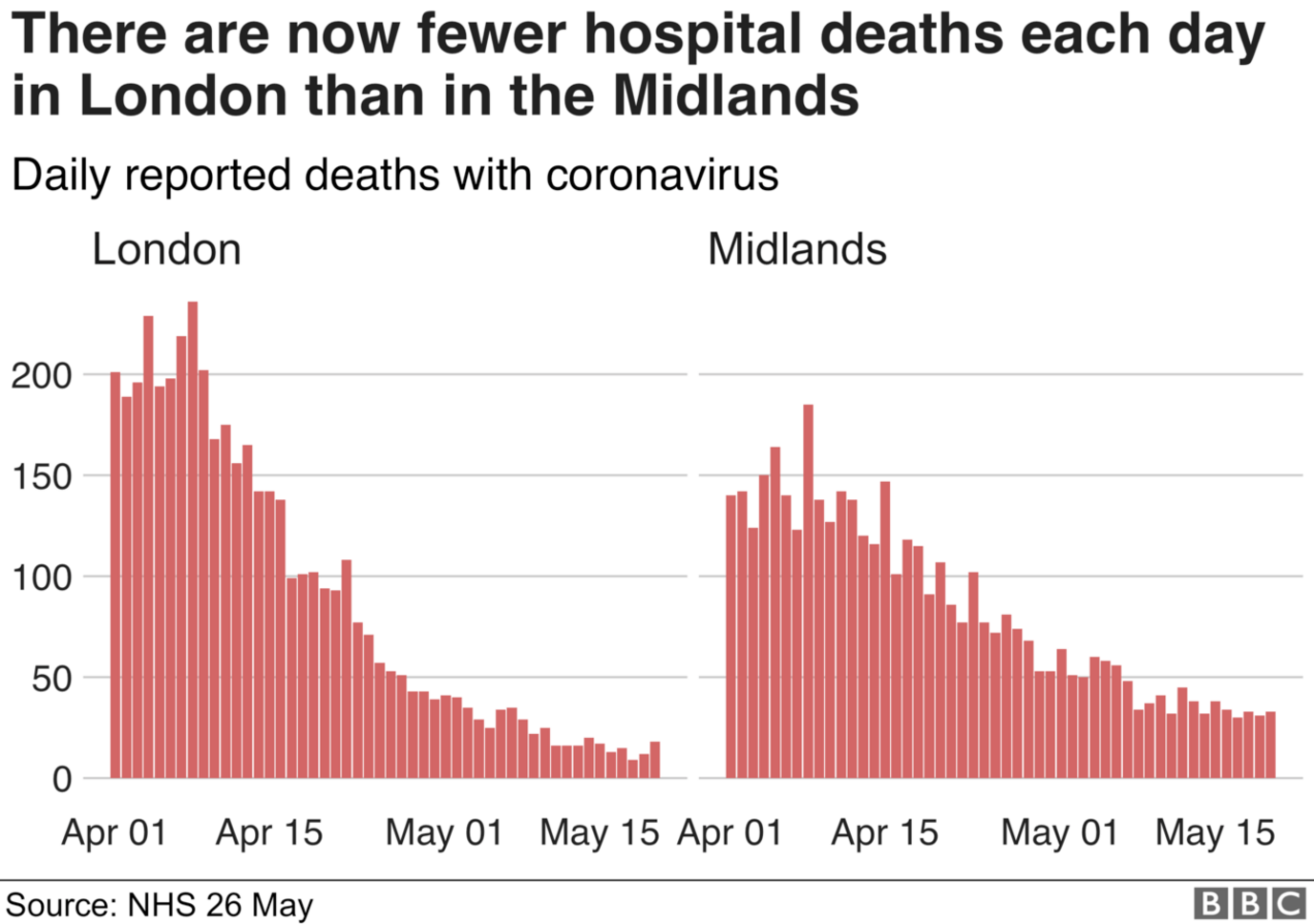
But that is because deaths in London have fallen unusually quickly - rather than the decline in the Midlands being slow.
In the Midlands, deaths in hospitals have fallen by 23% a week between 1 May and 20 May, compared with the average fall (25% a week).
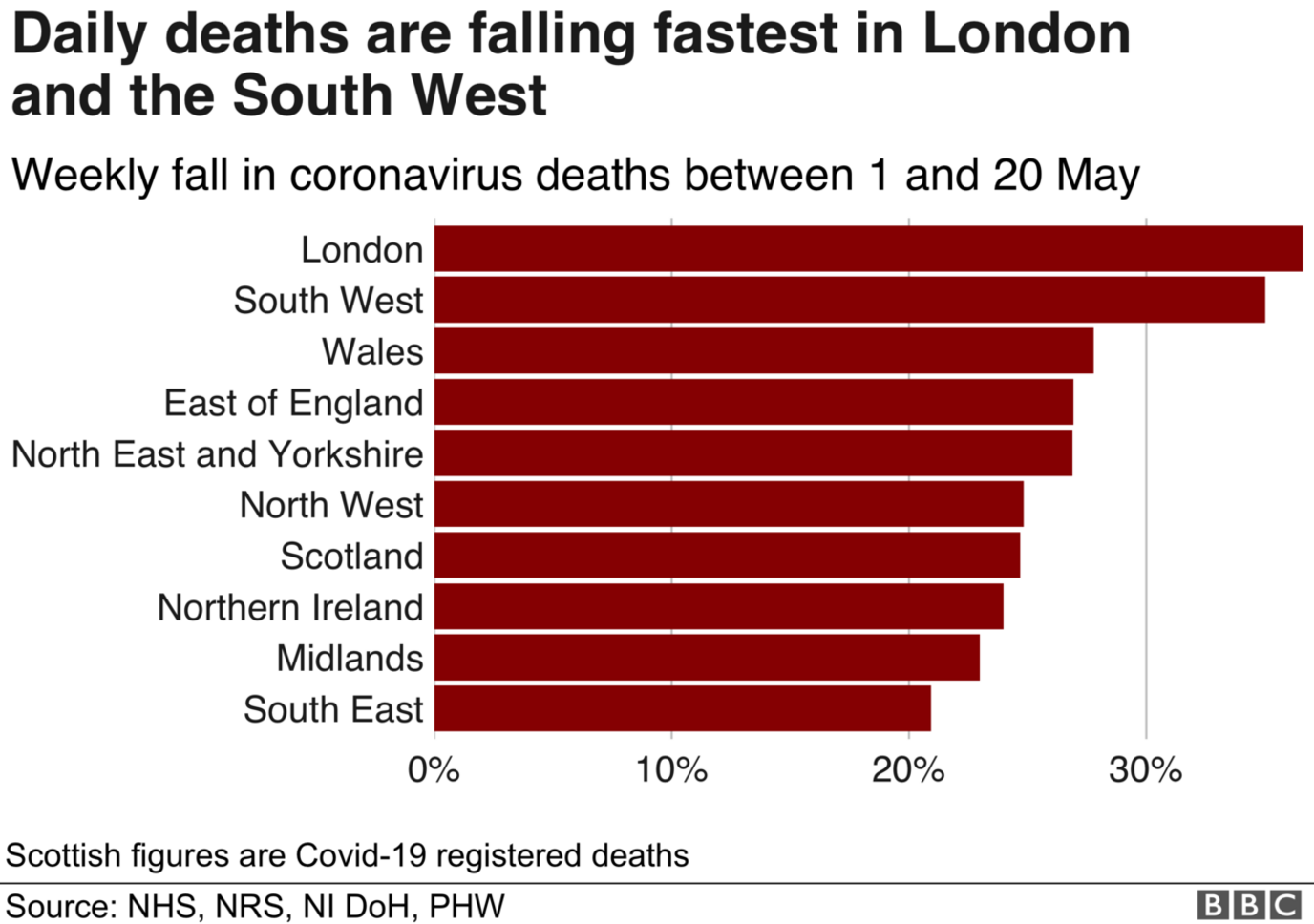
London - along with the South West - is now seeing the steepest falls in daily death numbers.
Hospitalisations have fallen by 10% a week in the Midlands in the period 1-20 May, compared with the UK average of 12% a week.
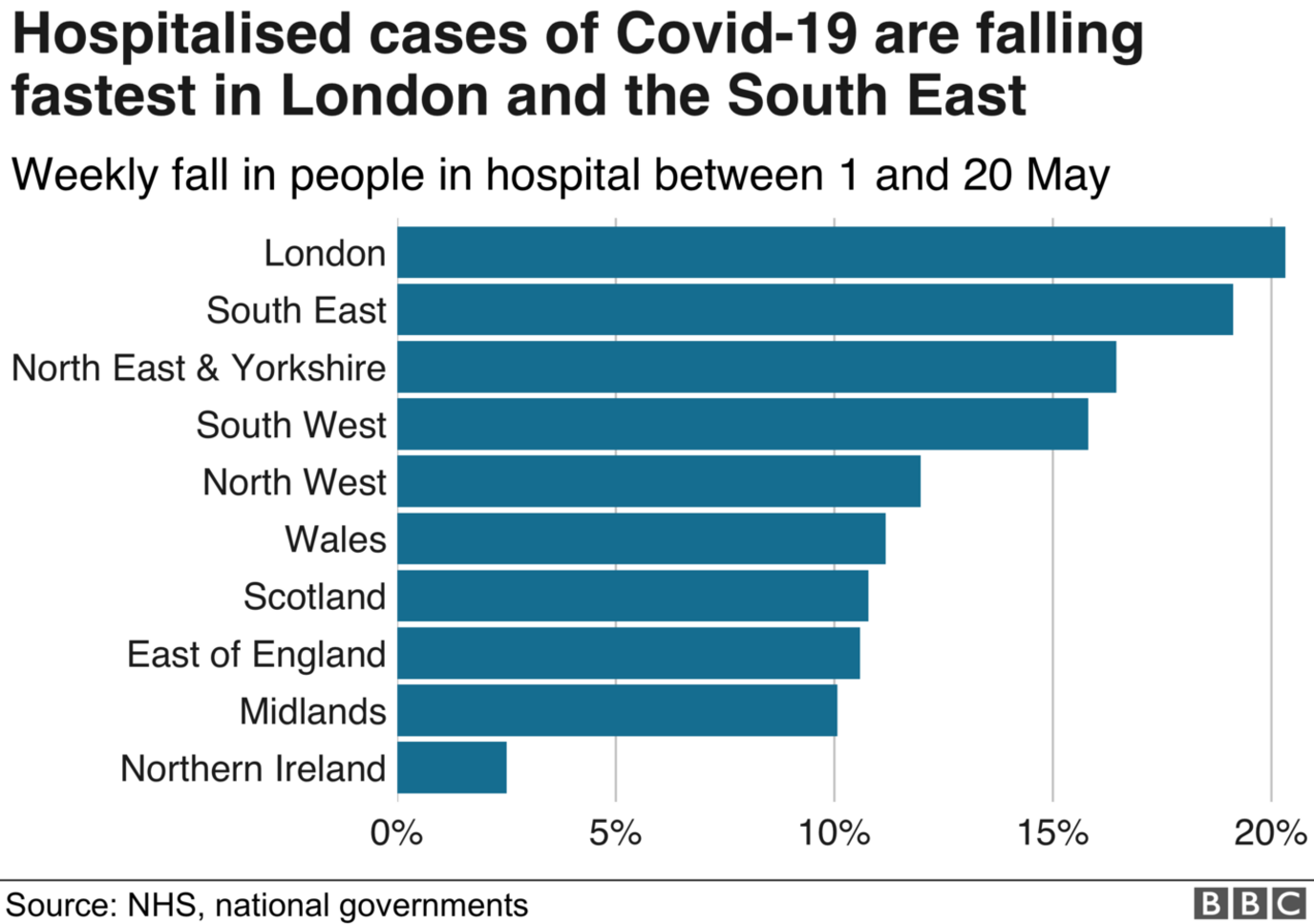
London also saw the fastest decline in confirmed cases, while in Wales, the number of confirmed cases grew slightly on average in the period.
But that is likely to be because of testing rates, rather than the true rate of infection because deaths are actually falling faster there than anywhere aside from London and the South West.
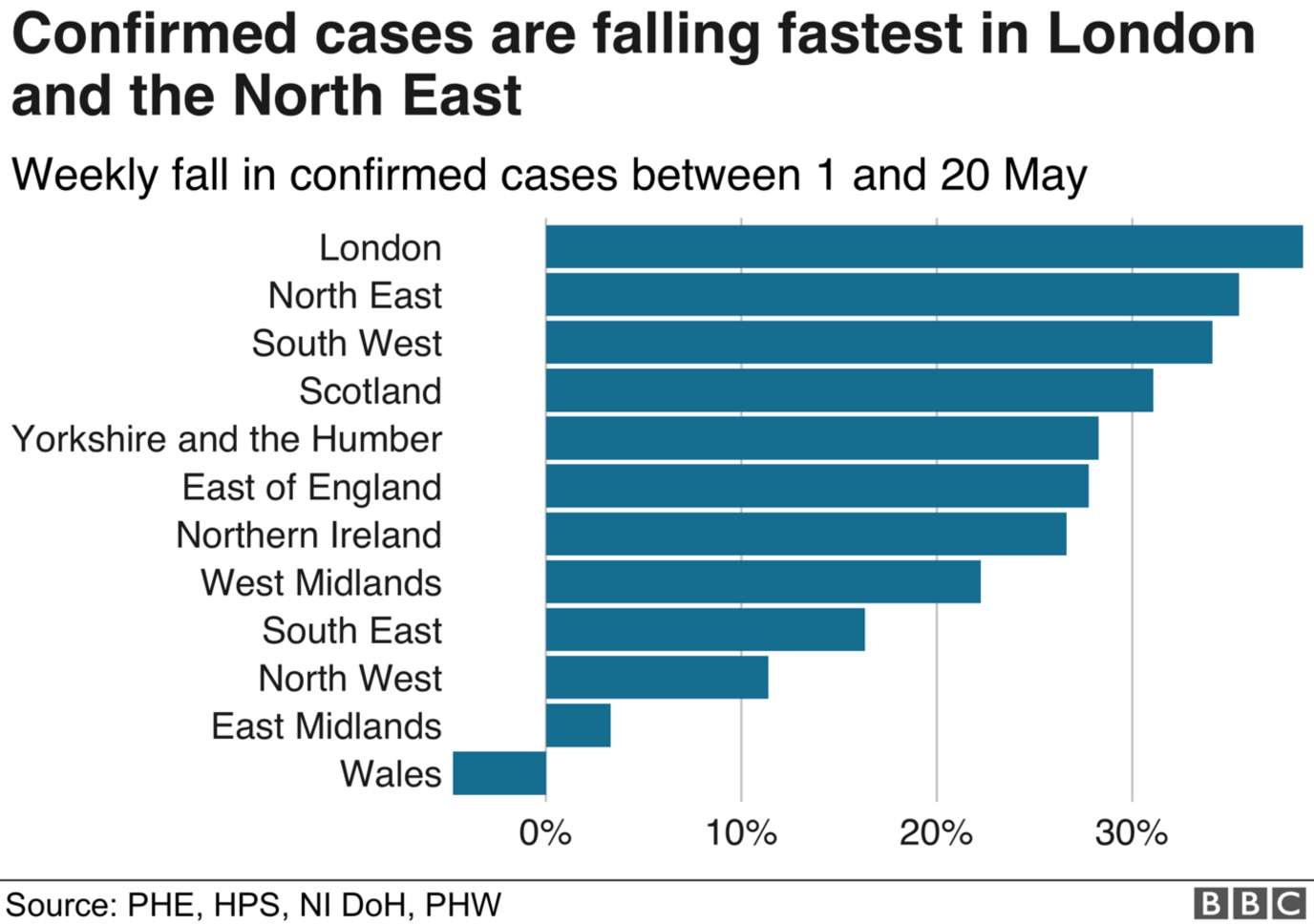
Coming out of lockdown may change the regional or local picture.
But as testing and tracing expand, or as the national prevalence survey provides more information on the number of infections in the country, there will be clearer data on both the national and local picture.
Graphics by Edwin Lowther

SCHOOLS: When will children be returning?
EXERCISE: What are the guidelines on getting out?
THE R NUMBER: What it means and why it matters
AIR TRAVELLERS: The new quarantine rules
LOOK-UP TOOL: How many cases in your area?

- Published26 March 2021

- Published5 July 2023
